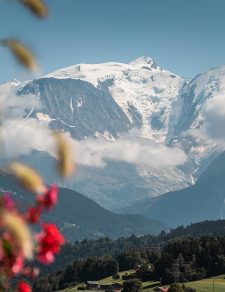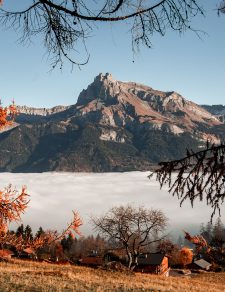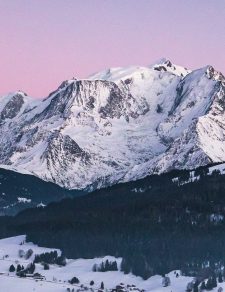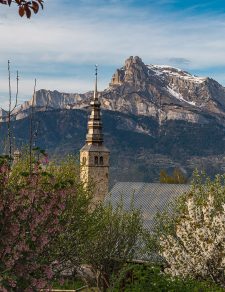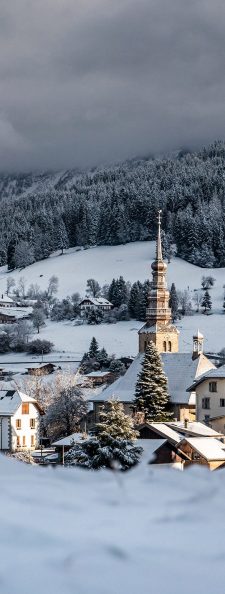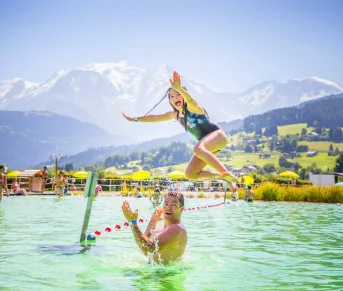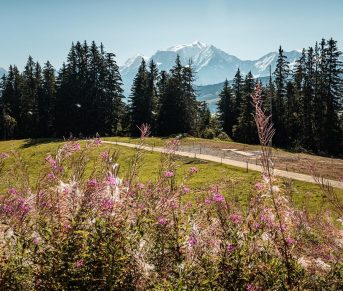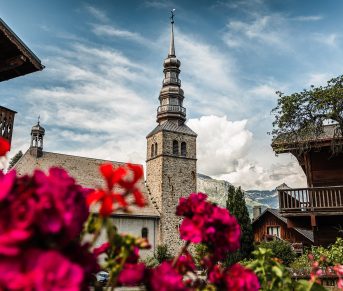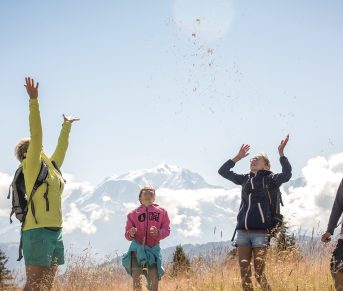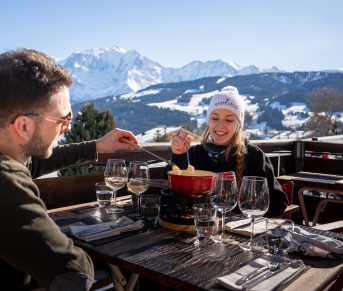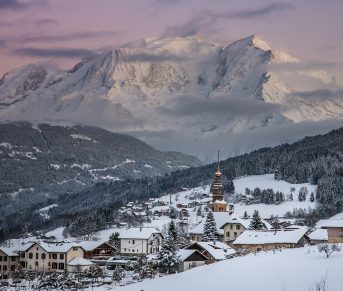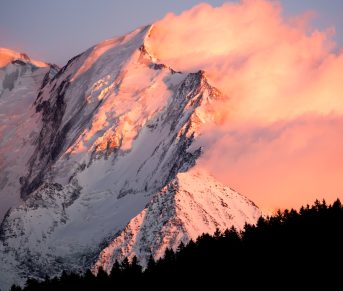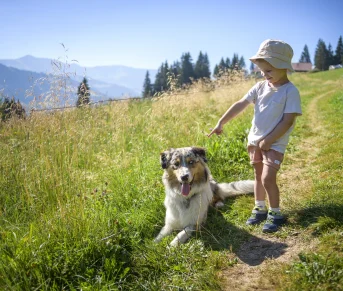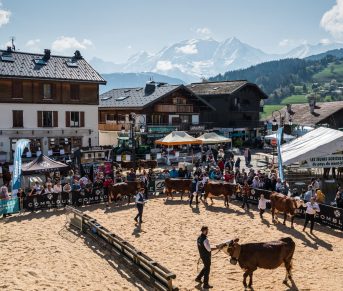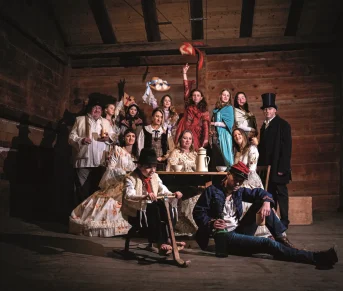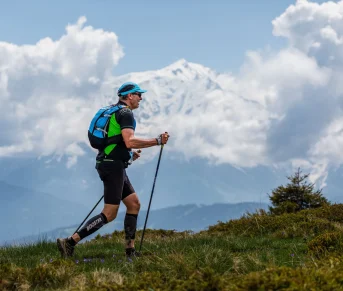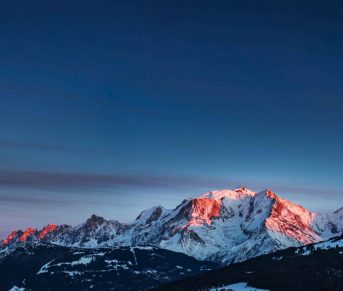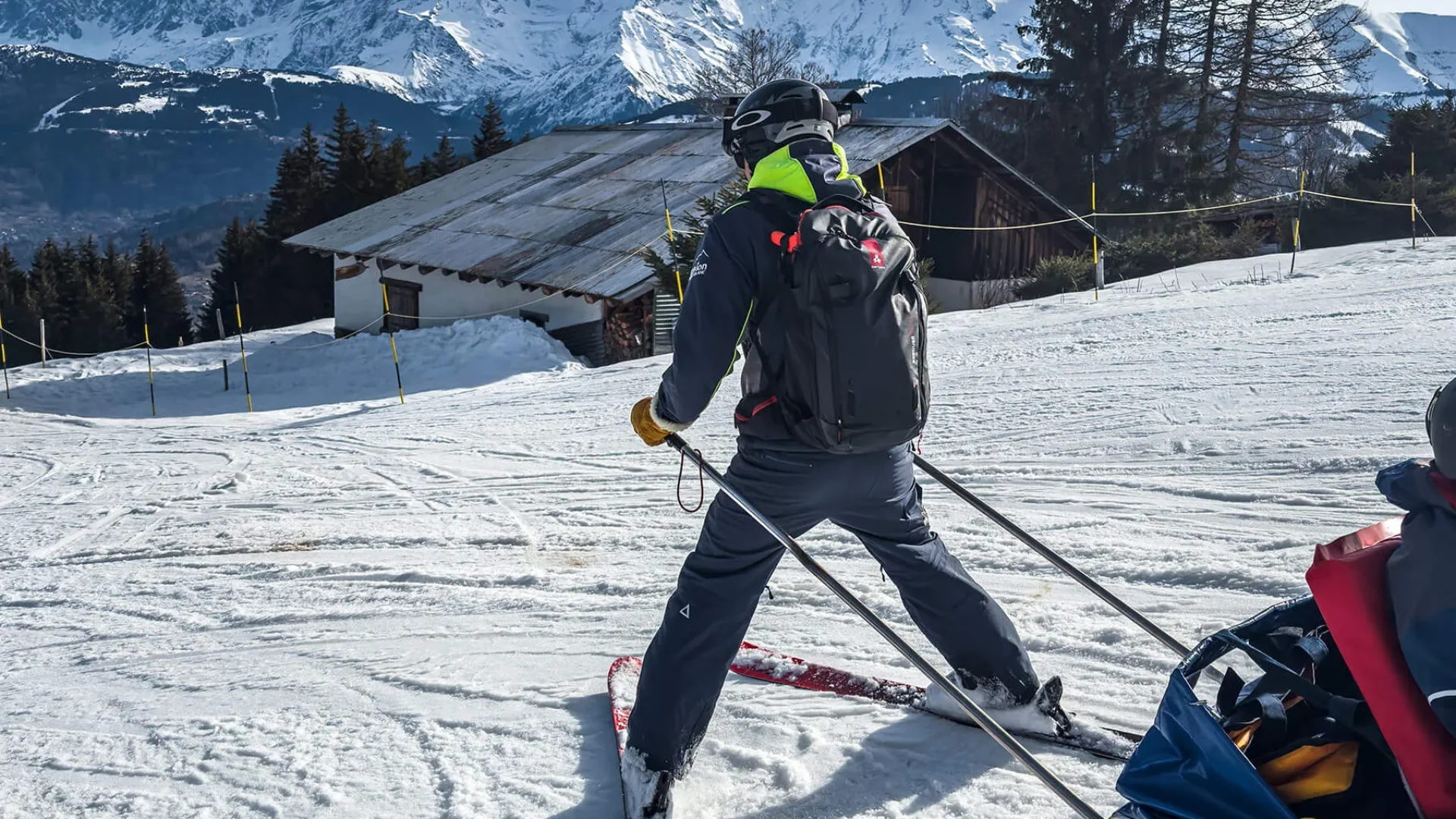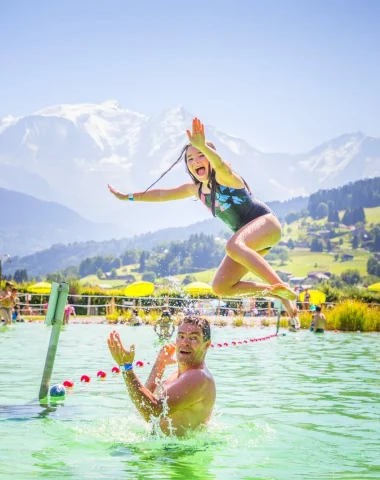We had the chance to accompany Jérôme, a rescue ski patroller in Combloux on the Portes du Mont-Blanc ski area, for a day of work. Follow us in this report to discover the job and a typical day of a ski patroller: from the opening to the closing of the slopes.
Monday January 29, 2024. We meet Jérôme at the ski lift offices. He has been a rescue tracker for 4 seasons already on the Portes du Mont-Blanc ski area. We will follow him through his day from A to Z to help you discover this mountain profession.
The opening of the ski area slopes
A ski patroller's day begins on a snowmobile to climb to the top of the slopes while the chairlifts start up. We must begin opening the slopes before the first skiers arrive.
The climb is a moment out of time: you have the mountain to yourself, and the magnificent sunrise over the Mont-Blanc range.
Once we arrive, we leave the snowmobile at the aid station, as it will be used later in the day.
The opening of the slopes awaits us: we put on our skis, and let's go! We start to descend the first slope. Jérôme explains to us what opening the slopes involves.
The goal is to ensure that the slopes are perfectly safe and in good condition so that skiers can practice skiing without danger. He walks the track to check that all the markings and markings are in place. It removes any obstacles on the track such as a branch for example. Sometimes, he even smoothes the track with his skis to eliminate hollows created by the passage of the snow groomer.
Once the first track is ready, he notifies his colleagues and the central office on the radio. Then we go back up by chairlift to start the operation again on another slope.
When the trackers communicate by radio the opening of a slope, the contact person in the offices updates the slope opening bulletin on the software which allows customers to be informed of the slopes open or not every day, at any time. moment of the day.
That's it, all the slopes of the day are open!
We return to the aid station for a small hot drink. Now, it's time to get busy with various tasks: install a marker to signal an obstacle or danger, recover a twisted signage panel...
But we must be ready because at any moment, a call for help on the slopes could arise!
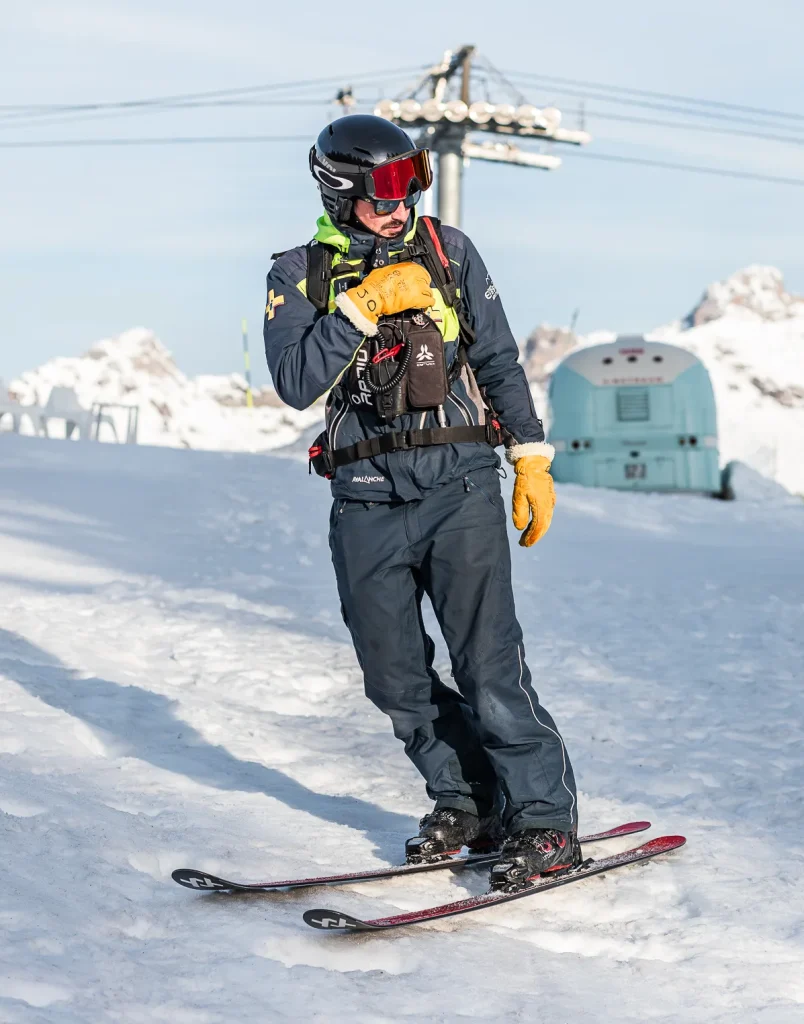
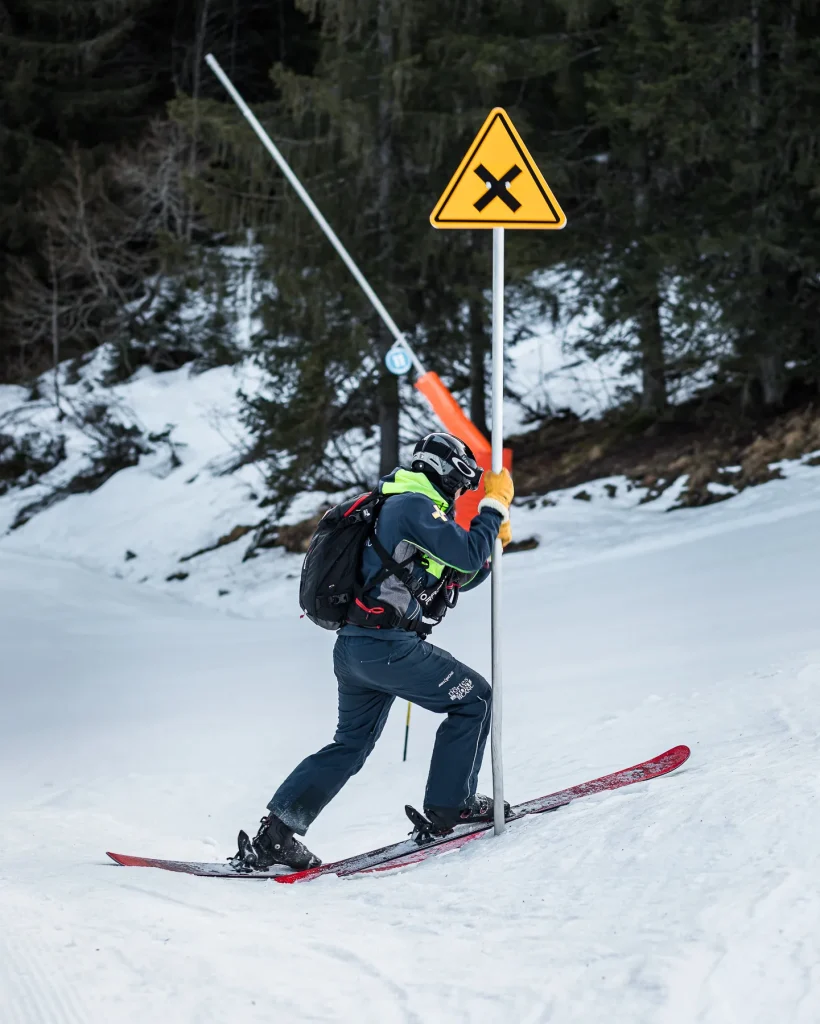
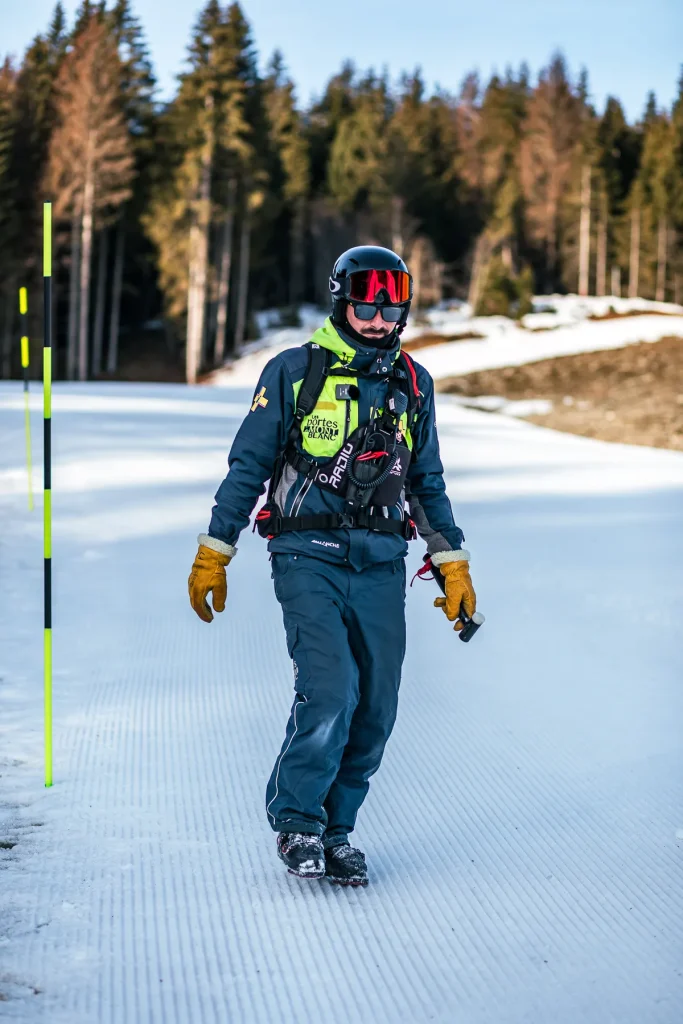
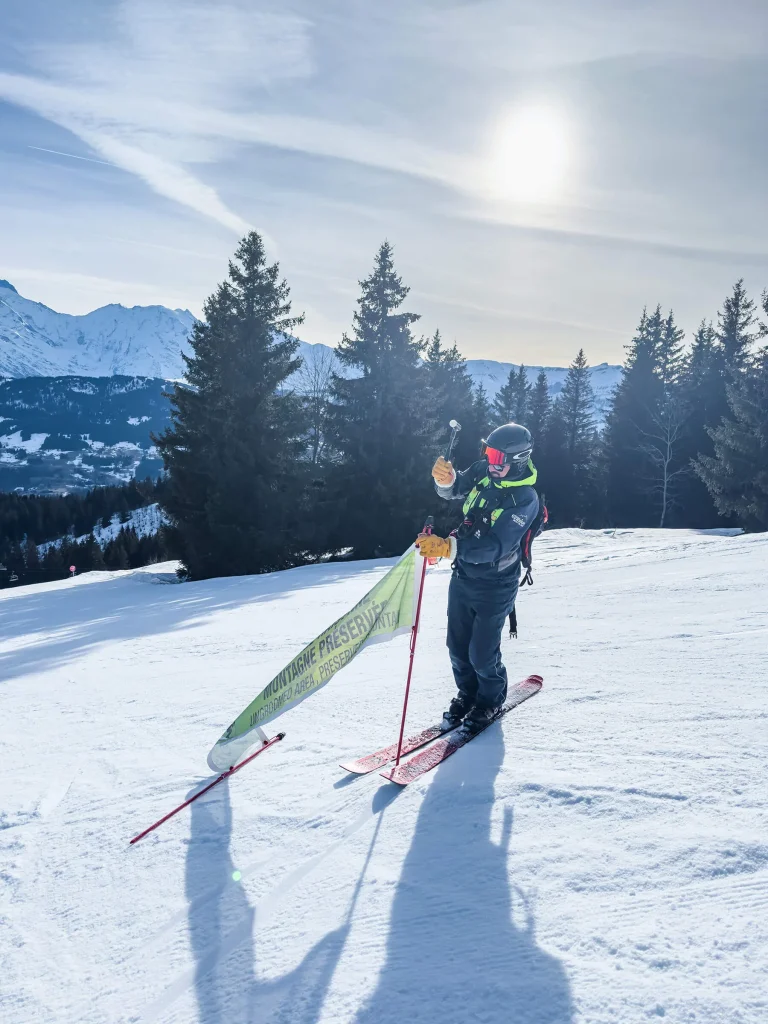
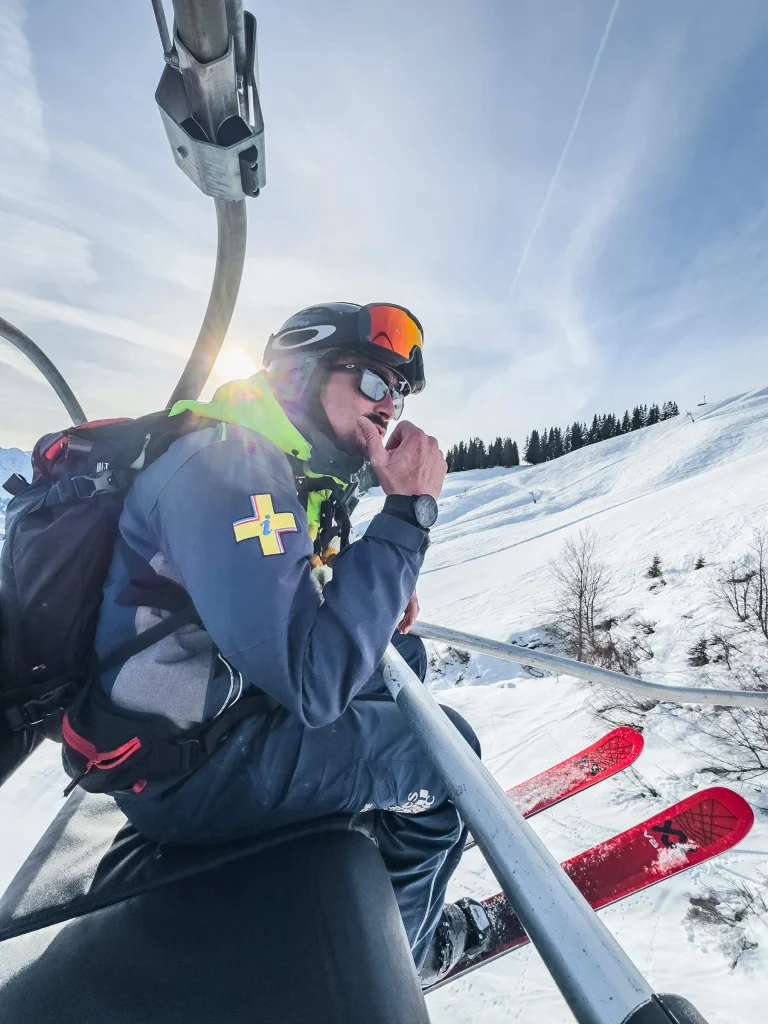
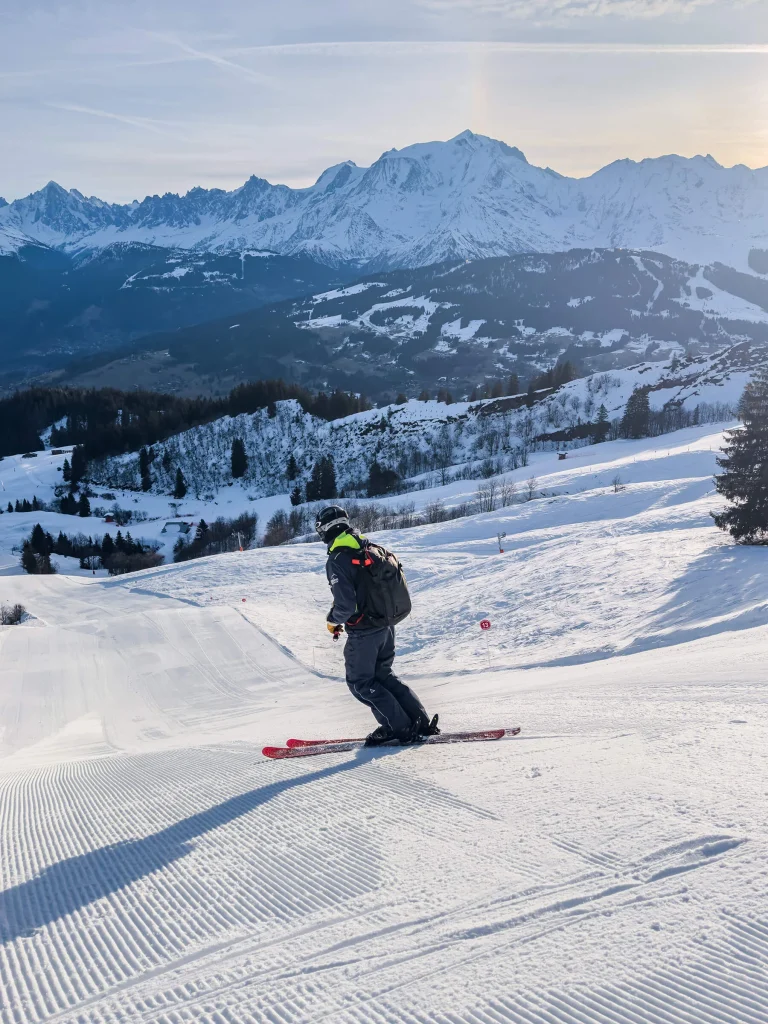
On-piste rescue
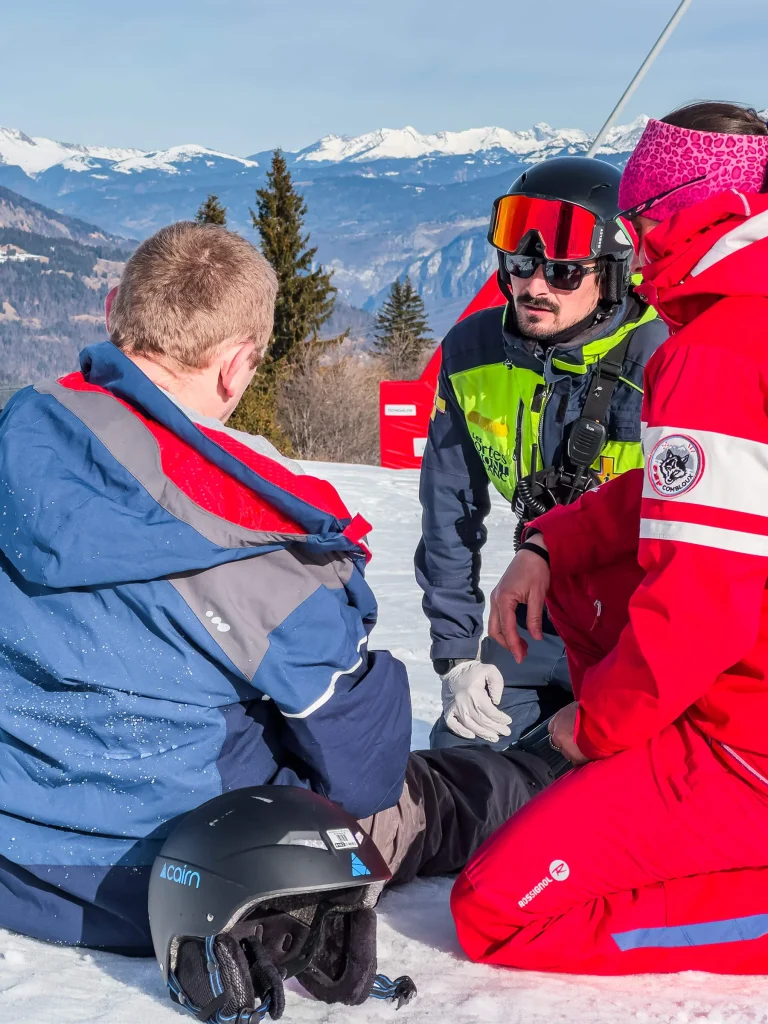
It must have been around 11 a.m. when Jérôme received a call on the emergency phone. As a sector representative, he is the one who has the telephone today.
It’s an ESF instructor who contacted us. One of his adult students fell and had severe shoulder pain. The instructor gives us essential information: the sex and approximate age of the injured person, the part of the body affected by the injury, the track concerned and the number of the nearest beacon.
We are only a few meters from the accident site. Jérôme picks up the sled at the top of the chairlift and we arrive in a few seconds near the injured man.
Jérôme secures the area by placing the sled upstream of the injured person. Then he comes to take note of the situation. The injured man's name is Cédric, he is conscious and seated. He tells Jérôme that it was his shoulder that was hit during a fall and that it is painful. Our rescuer puts on a pair of gloves and examines Cédric's shoulder. The verdict quickly falls: it's a dislocation.
He quickly checks the pulse to ensure that no artery is compressed: this could prevent blood from circulating properly in the arm and could cause necrosis. Fortunately, all is well on that side. After immobilizing the accident victim's shoulder, Jérôme contacts the ambulance to come pick up Cédric and take him to the Combloux medical office immediately. He then warns his colleagues by radio. He places the injured man in the sled, warning him that the descent could be very painful.
During the descent, the rescue ski patroller does his best to minimize the impact of sliding on the injured person. The ski technique to drive the sled is quite impressive to see! Jérôme alternates between plowing snow and skiing perpendicular to the track to slow down the sled. The 2 handles are also designed to be able to brake using the arms and take some pressure off the rescuer's legs.
Jérôme regularly checks in on Cédric to check that he is not in too much pain and offers him breaks if necessary.
Arriving at the bottom of the slopes, near an area reserved for ambulance parking, Jérôme fills out some information. Fortunately, the injured person had taken out insurance and all its costs (around 700 euros here) will be covered!
The paramedics then take over.
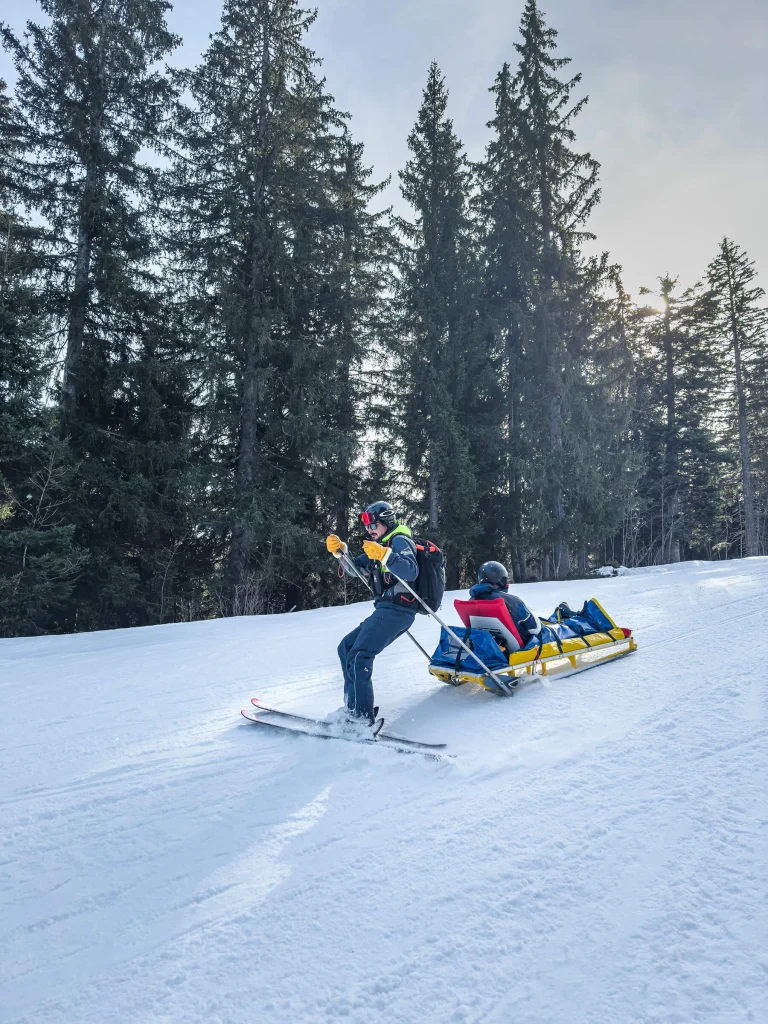
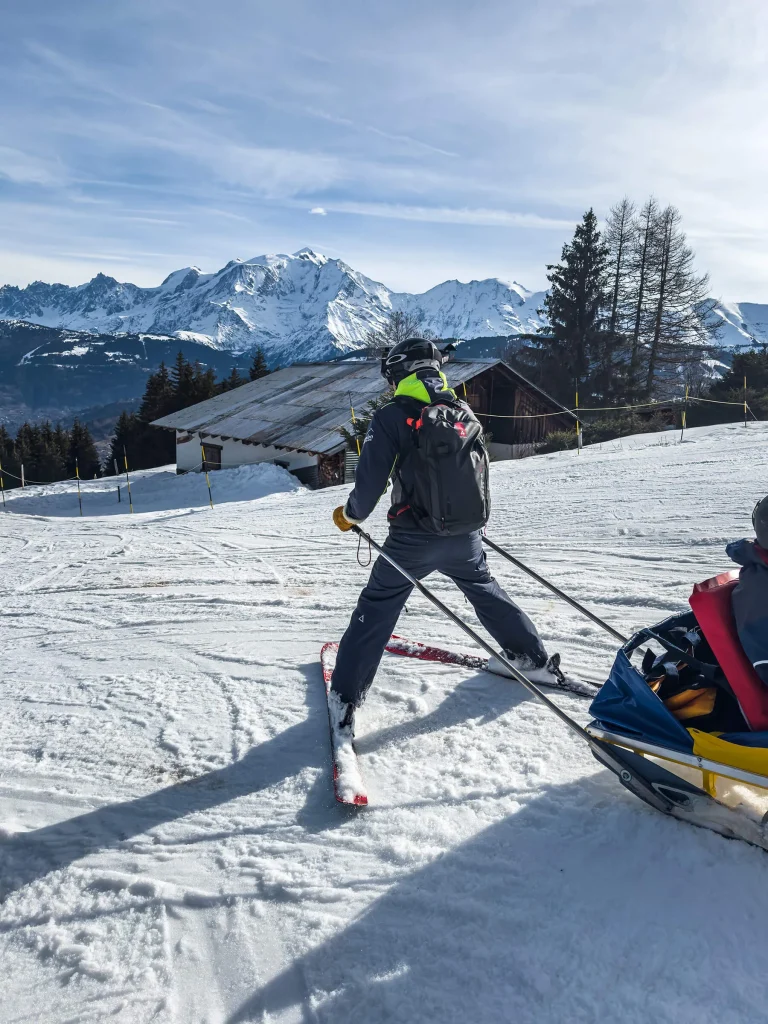
Now that the rescue is complete, the sled must be brought back to the ski area so that it is available for future interventions. The ascent is by ski lift then by chairlift. The sled is placed by the operating agents on a seat while we wait for it to arrive at the summit to collect it.
12:30 p.m.: we head towards the first aid station for the meal break. We remain on alert because in the event of a call for help, we will have to abandon our plates.
Once the batteries are recharged, we head back out onto the slopes to check that everything is okay. We take the opportunity to rescue a customer on a snowboard who cannot get on the steep ski lift. First aid trackers are also there to lend a hand in unusual situations. As Jérôme likes to point out, it is above all a profession based on people.
Closure of trails and preparation of the grooming plan
After this little tour on the slopes, in the absence of a rescue call, we return to the aid station to have a coffee. Jérôme takes the opportunity to prepare the grooming plan for the next day.
Based on what he observed on the ground today, he makes his grooming wishes and transmits them to the chief groomer.
Meanwhile, the closure of the slopes has already begun. We are waiting for the last skiers from the Giettaz sector to have returned to the Combloux sector. When we are confirmed that everyone has returned safely, we can proceed to close the last slopes of Combloux.
Jérôme scans all the slopes before starting the descent to see if there are any more skiers. Going down the track, it removes the annoying markings for the snow groomers. It will be put back in place when the slopes open tomorrow.
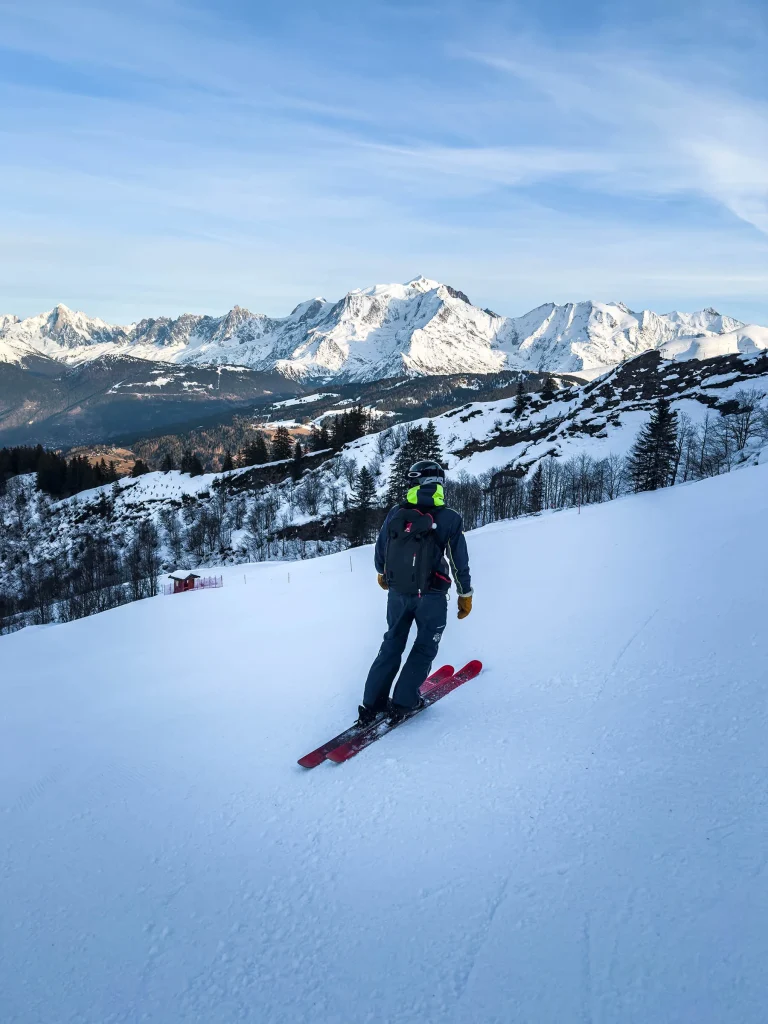
This is how this day ends in the shoes of a rescue tracker in Combloux. We hope you enjoyed discovering this passionate profession.
On video
Experience the day of a tracker on video!
Themes


